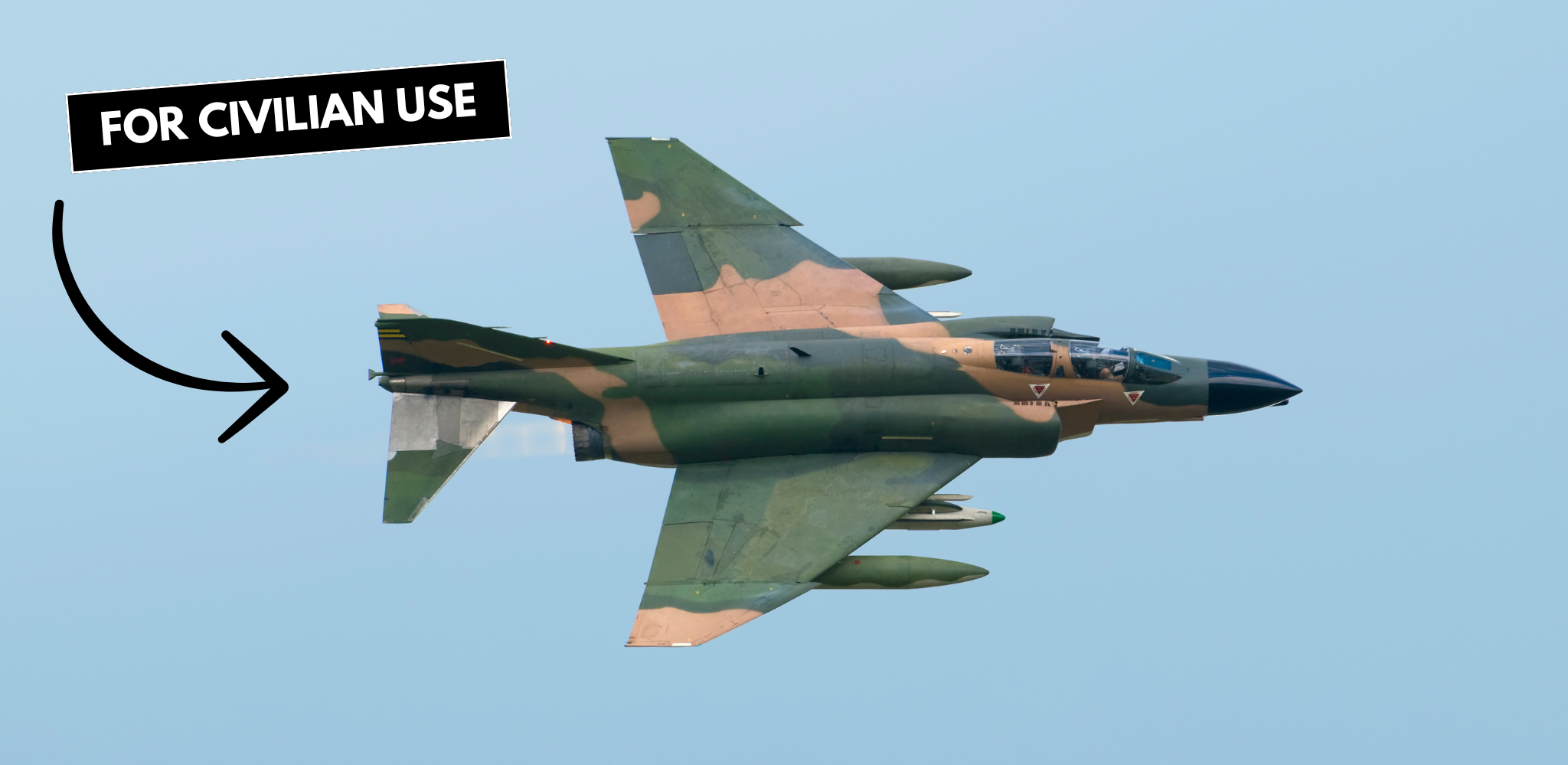
Can Old Fighter Jet Like the F4 Phantom Repurposed for Civilian Use?
Repurposing an F4 Phantom—or any fighter jet, really—is arguably the craziest and coolest idea in the history of aviation. Imagine owning your personal jet that flies at 1,400 mph, can carry up to 18,650 pounds—of luggage supposedly—and looks like something straight out of a high-octane action movie. It’s like having a car—except this one can break the sound barrier. As for the refueling costs... well, let’s keep that part for later.
The thrill of converting a retired fighter jet like the F4 Phantom for civilian use might sound incredible, but the reality is far more complicated than just disarming the aircraft and taking off. For starters, disarming a fighter jet isn’t simply a matter of removing weaponry; retired jets like the F4 require a complete overhaul to be safe for civilian use. These jets are built for combat, not comfort, and the modifications needed to convert them are extensive and expensive. From installing commercial-grade navigation systems to adapting cockpit controls and adding essential safety mechanisms, even minimal adjustments demand specialized expertise and millions of dollars—often without even a guarantee that the jet will meet civilian certification standards.
On top of modification costs, repurposing an F4 Phantom runs into substantial regulatory challenges. In the United States, both the FAA and the Department of Defense enforce strict regulations on retired military jets, covering everything from airworthiness to operational standards. Even with the necessary modifications, few military jets can meet the stringent safety requirements for civilian certification. To bring a fighter jet into compliance, extensive documentation, testing, and inspections are required, all with no certainty that the jet will be cleared for civilian airspace.
Then there’s the maintenance. Owning an F4 Phantom isn’t like owning a Pilatus PC-12 or even a standard business jet. Fighter jets are designed for intense, high-speed missions, which means their fuel consumption, upkeep, and parts replacement are on an entirely different scale. They’re built to run fast and hard, consuming more fuel in an hour than a typical private jet might in a day. The parts and skilled labor needed for maintenance are also difficult to source, with few civilian mechanics trained to handle fighter jet engines and systems. The operating costs alone for an F4 can reach tens of thousands of dollars per hour, making it prohibitively expensive for anyone outside of military budgets.
Even if you managed somehow to clear the financial and regulatory hurdles, there’s still the issue of comfort—or the lack thereof. Fighter jets like the F4 Phantom are engineered for speed and maneuverability in combat, not for passenger comfort or convenience. Even with modifications, you’re left with cramped seating, limited space, and no amenities like climate control or soundproofing that even a basic civilian aircraft would offer. The interior remains loud, minimalistic, and optimized for combat—not relaxation. So, while flying an F4 Phantom might look undeniably cool, it wouldn’t be the smooth, luxurious ride most private travelers are accustomed to.
The idea of owning and flying a disarmed F4 Phantom is thrilling, but the reality is far from practical. Between extensive modifications, endless paperwork, and astronomical operating costs, converting a fighter jet for civilian use is more fantasy than feasible. While the concept is captivating, for most, it remains firmly in the realm of imagination rather than achievable reality.
Follow me
Latest posts by livt1978 (see all)
- Azerbaijani Plane Crash in Kazakhstan Leaves 38 Dead, Investigations Underway - December 26, 2024
- Safety Standards in Private Jet Travel - December 26, 2024
- Popular Destinations for Private Jet Travelers - December 25, 2024



